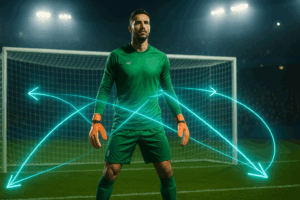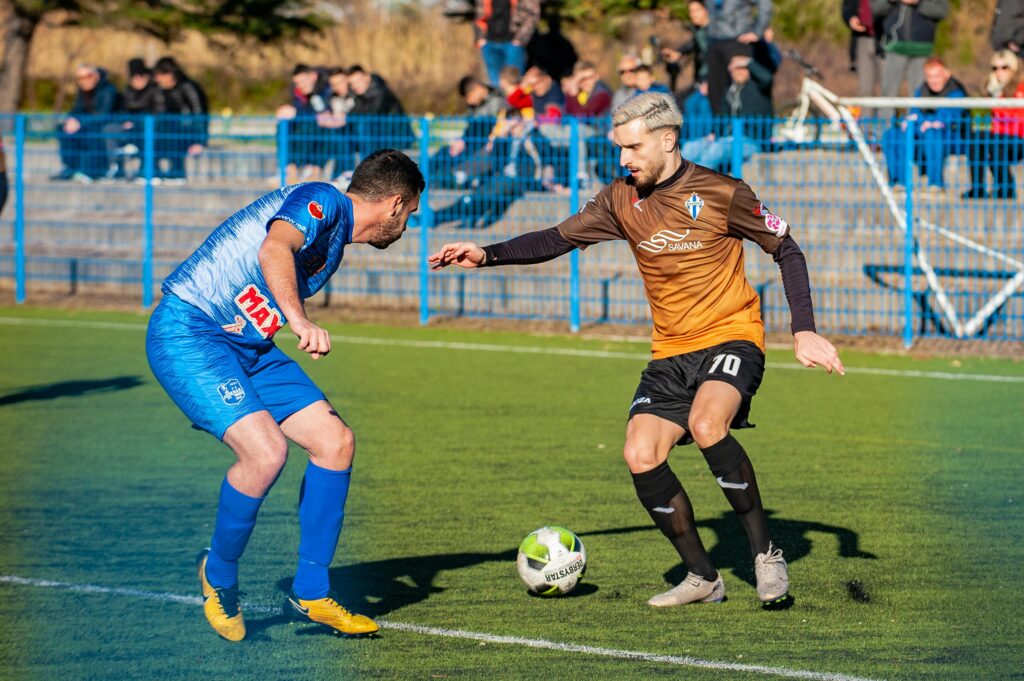
Football is a game where the outcome can be decided in a matter of moments, and attack training plays a crucial role in preparing players to make those split-second decisions. One of the most important zones on the pitch, often referred to as the Zone 14 , is the place where these drills can have a big impact. This ‘golden zone’, which is located directly in front of the goal, is considered the most dangerous part of the pitch as it has the greatest potential to create goal scoring opportunities.
Zone 14 is an important area on the football pitch that is located immediately outside the penalty area. From Shots on goal to decisive passes and defensive actions - Many of the game's most important decisions and actions take place in this area. The ability to move in this zone and learn the necessary skills and techniques can have a major impact on the outcome of a game.
Let's take a look at the most important exercises that can be used to maximise the potential of zone 14.
Zone 14 offers the optimum angle and distance to the goal to either finish directly or to put the goalkeeper in difficult positions with targeted shots. However, successful shots from this zone not only require technical precision, but also the ability to choose the best shot option under time pressure - be it a well-placed shot into the corner, a hard finish from distance or a skilful lob.
Objective: Precise and targeted shots after preparation.
Procedure:
Objective: Quick goal finish under time and opponent pressure.
Procedure:
Tip: Encourage quick decisions - shot from the turn, direct shot or body deception before the shot.
Objective: Recognising shooting opportunities in realistic game situations.
Procedure:
Variations: Additional defenders or ‘no-shoot zones.’

Whether it's a deadly pass, a targeted finish or a shift in play, the ability to make decisions quickly and efficiently is crucial in this zone. To hone this ability, there are targeted training exercises that focus specifically on actions in zone 14.
Objective: Improve your overview of the game and decision-making under pressure.
Procedure:
Variations: Limit to a maximum of two ball contacts to increase the decision-making speed.
Objective: Promoting perception and creativity in decision-making.
Procedure:
Tip: Encourage players to take risks and try different options, such as chip balls, pin passes or direct finishes.
Objective: Improve reaction speed and prioritize the best play option.
Procedure:
Addition: After a few rounds, the time pressure is gradually increased to further improve the reaction speed.

Zone 14 is not only a key area for the offense, but also for the defense. Teams that defend this area effectively can defuse dangerous actions by the opponent and avoid losing the ball in critical zones. Defensive positioning drills aim to train the behavior of defensive players in zone 14 so that they can condense spaces, intercept passes and block shots.
Objective: Space-oriented defense in the zone 14.
Procedure:
Tip: Pay attention to the spacing between the defenders - compact, but not overlapping.
Objective: Promotion of individual defense capabilities.
Procedure:
Tip: Train the timing and angle of the defense to steer the attacker into harmless zones.
Objective: Effective spatial defense despite the opponent's superior numbers.
Procedure:
Tip: Promote communication and clear responsibilities among the defenders.
Objective: Return to defense quickly after losing the ball.
Procedure:
Variations: Limit the time for switching to increase the reaction speed.
Maximizing the effect of training exercises in zone 14 can be achieved through video analysis, as already explained. This is where the automated AI camera by a company called zone14 comes into play. This technology was developed to analyze and optimize moves across the entire pitch. The camera offers real-time insights and detailed analyses. Coaches can use this technology to optimize their training sessions in zone 14.

Zone 14 is the heart of a soccer game, where both offensive brilliance and defensive solidity are tested. By focusing on the key drills - be it shooting, decision making, passing or defensive positioning - the potential of this important area can be fully exploited. Integrating the zone14 camera into these drills provides invaluable real-time information that allows coaches to refine tactics and improve player performance. By mastering zone 14, teams not only increase their chances of scoring, but also their ability to protect their own goal, which ultimately leads to more success on the pitch.
